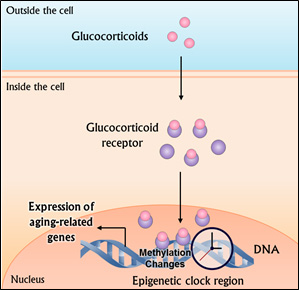José Jerónimo and his team are transforming the face of cervical cancer screening. Jerónimo is a physician and senior advisor for the women’s cancers branch of PATH, an international nonprofit organization that uses innovative technologies to improve health outcomes in developing countries. Jerónimo, who’s work at PATH has facilitated the prevention and treatment of cervical cancer for thousands in the developing world, spoke at the Duke Institute for Global Health on Dec. 2.
Cervical cancer testing has been a point of conflict in the medical community for quite some time now, for the pap smear — for many years, the only test available to detect cervical cancer — is not very sensitive to abnormal tissue. Since skepticism with the pap smear arose a few decades ago, doctors like Jerónimo have been working tirelessly to find more effective screening strategies.

José Jerónimo, Peruvian physician and public health advocate, received his specialty training in gynecologic oncology at the National Cancer Institute in Peru.
Cervical cancer can be acquired through the presence of HPV (human papilloma virus). Chronic infections of HPV have been proven to increase the likelihood of contracting cervical cancer, so developing primary prevention initiatives to avoid developing HPV to begin with are essential to decrease the prevalence of cervical cancer. HPV testing, unlike the pap smear, can be self-collected and does not require the complex, expensive machinery that the pap smear does. Initial self-sampling studies in India, Uganda, and Nicaragua indicated a willingness by the female community to self-test, so long as sanitary and private conditions were provided.
Studies in the Jujuy province of Argentina indicated that community health workers played a key role in facilitating the self-sampling process. When the health workers differed locals to clinics or sent them to facilities for testing, only 20 percent actually went. But, when they brought the self-sampling tests to locals’ homes directly, testing was above 80 percent. The easy accessibility of self-sampling, along with encouragement by local health volunteers, clearly showed that self-sampling was much more effective.

A group of female community health workers in Lima, Peru, educating the community about HPV testing.
Jerónimo’s current work focuses on strengthening government screening systems for HPV that are already in place. By helping ministries introduce and scale up the testing, he and others at PATH hope to decrease HPV and cervical cancer rates.
But, it goes beyond testing. Jerónimo emphasizes the need for evaluation and follow-up mechanisms after testing positive. Although testing efforts have improved significantly, the treatment provided after for those who have tested positive is still lagging. Jerónimo claims that much of this is due to minimal efforts by the local governments to really follow through beyond the testing phase.
PATH is looking for innovative ways to treat HPV that are inexpensive and effective. They recently developed their own version of the thermal coagulator, a probe that treats infected tissue using heat. Their design runs on a battery, rather than needing constant electricity, and uses a progressive heating mechanism that is only activated upon touching the cervix. There is still progress to be made, in both testing and treatment of HPV and cervical cancer, but through efforts by both local and international communities, Jerónimo shows us that is possible.
 Post by Lola Sanchez-Carrion
Post by Lola Sanchez-Carrion



 The dividing red spots in this time-lapse video belong to a busily developing fruit fly embryo. A fruit fly egg can divide into some 6,000 cells in just two hours — faster division than cancer tumors. To watch them action, graduate student
The dividing red spots in this time-lapse video belong to a busily developing fruit fly embryo. A fruit fly egg can divide into some 6,000 cells in just two hours — faster division than cancer tumors. To watch them action, graduate student 


 Guest Post by Kelly Rae Chi
Guest Post by Kelly Rae Chi

 Guest Post by Katy Riccione, Ph.D. Candidate in Biomedical Engineering
Guest Post by Katy Riccione, Ph.D. Candidate in Biomedical Engineering












